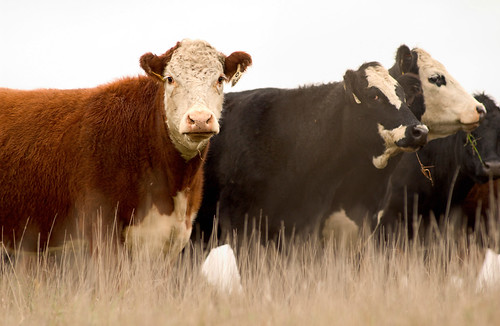
This post is part of the Science Tuesday feature series on the USDA blog. Check back each week as we showcase stories and news from the USDA’s rich science and research portfolio.
The idea that around 80 percent of human DNA is “junk” DNA with no real purpose never sat well with scientists. So in 2003, researchers funded by the U.S. National Institutes of Health started working on a project called ENCODE, which was designed to study the role of non-coding “junk” DNA in genetic expression and to define basic functional units in the human genome.
USDA’s Agricultural Research Service (ARS) scientists are spearheading a parallel project called AgENCODE, which takes a similar approach to exploring the mechanics of DNA regulation in key livestock species. “We can identify 70 to 90 percent (or more) of the DNA coding elements in animal genomes, but we don’t know much at all about the non-coding elements,” says ARS National Program Leader Jeffrey Silverstein, who is helping to organize the AgENCODE effort. “We think many of these non-coding segments regulate gene activity, and we need to understand how these segments affect the expression of an animal’s physical traits, which is very important in breeding.”
More than 180 researchers attended an AgENCODE Workshop earlier this year in San Diego. After speakers made presentations about ENCODE and ongoing genomic studies, breakout groups formed to discuss a range of key AgENCODE research issues.
For instance, scientists need to determine which tissues should be studied—such as skeletal muscle in meat animals, mammary tissues in dairy cows, and immune and reproductive tissues in all livestock—as well as select the DNA processes and transformations to be investigated. Scientists must also decide when, during an animal’s lifespan, to collect tissue for study, since different snapshots of genetic activity will be obtained during different stages of development.
AgENCODE researchers will initially use protocols developed by the ENCODE consortium and the International Human Epigenome Consortium as the starting point for defining AgENCODE experimental and meta data collection processes. They will also invite collaborations with researchers funded by the National Science Foundation, EU-US Animal Biotechnology Working Group scientists, and others on animal genome issues of shared interest.
“The first applications for animal agriculture will probably be seen in more rapid and efficient selective breeding,” Silverstein says. “We also have a huge potential for discovery and for developing a more basic understanding of the evolution of biological processes that significantly affect animal and human health, heredity, and the range of genetic variation within and between species.”
